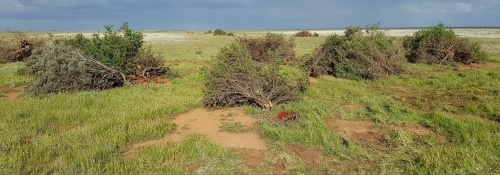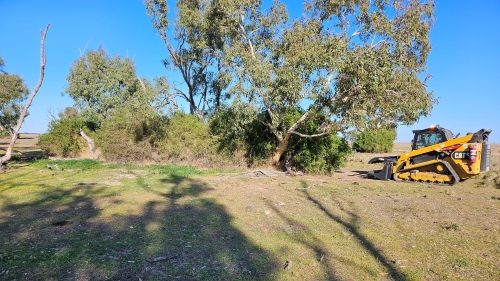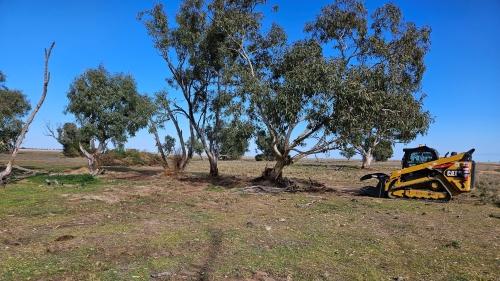Tackling a prickly issue for plains-wanderer conservation

Above-average rainfall and flooding over the past two years have resulted in good growing conditions for boxthorns, with boxthorns encroaching into the grassland habitat of plains-wanderers.
Boxthorns are a threat to plains-wanderers and their grassland habitat.
Boxthorns provide perching branches for birds that prey on plains-wanderers such as Spotted Harriers and Black Falcons. Boxthorns also create hiding spots for exotic predators such as foxes and cats and cover for rabbits which compete with plains-wanderers for food resources.
Boxthorn renders grassland habitat unsuitable for inhabitation by the plains-wanderer. It leads to temporary or permanent displacement of plains-wanderer populations.
By the end of June 2023, more than 3,000 ha of boxthorns will have been removed from land within and surrounding plains-wanderer habitat in the Murray LLS region.
Boxthorn control works have been undertaken across seven properties using mechanical and chemical removal methods. Land managers are removing boxthorn from approximately 1,500 ha, and Mark Robb at Robb Environmental Management Services has undertaken another 1,500 ha of boxthorn control works.
This program is supported by Local Land Services through funding from the Australian Government’s National Landcare Program and the NSW Government’s Saving our Species Program.

Figure 1. Before boxthorn control (area adjacent to plains-wanderer habitat). M.Robb

Figure 2. After boxthorn control (area adjacent to plains-wanderer habitat) M.Robb
Photo at the top of the page: Boxthorns within plains-wanderer habitat that have been controlled via the cut stump method. M.Robb